If you’re here, you’re probably starting a new project that requires a grinder — but which one? Maybe you’re in the middle of a DIY project, unsure if your angle grinder is suitable for that fine-detail work, or perhaps you’re considering investing in a die grinder for the first time but wondering if it will be worthy or just lay around in your workshop? When we discuss angle grinder vs die grinder, choosing one can feel like a real puzzle, especially since each has unique strengths.
Or maybe it’s simpler: you’re looking for a tool that can handle a bit of everything without breaking the bank. Whether you’re curious about how each tool performs on metal, wood, or those hard-to-reach spots, you’re in the right place.
We’ll break down exactly what sets an angle grinder apart from a die grinder, the types of jobs they handle best, and how to pick the tool according to your next project’s requirements. So let’s do this!
My Top Recommendations!
Last update on 2025-07-24 / Affiliate links / Images from Amazon Product Advertising API
What Is an Angle Grinder?
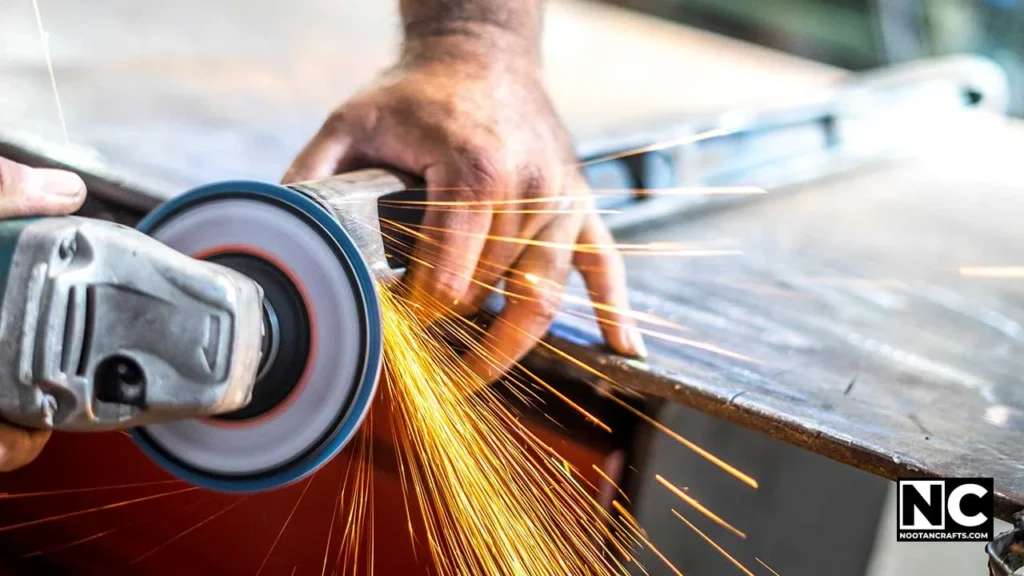
An angle grinder, sometimes called a disc grinder, side grinder, or angle sander, is a robust, powerful tool designed to tackle heavy-duty tasks. It’s equipped with a rotating disc that sits at a right angle to the handle (hence the name “angle” grinder). This tool can quickly chew through and slice thick material, handling jobs demanding serious power.
Key Features of an Angle Grinder
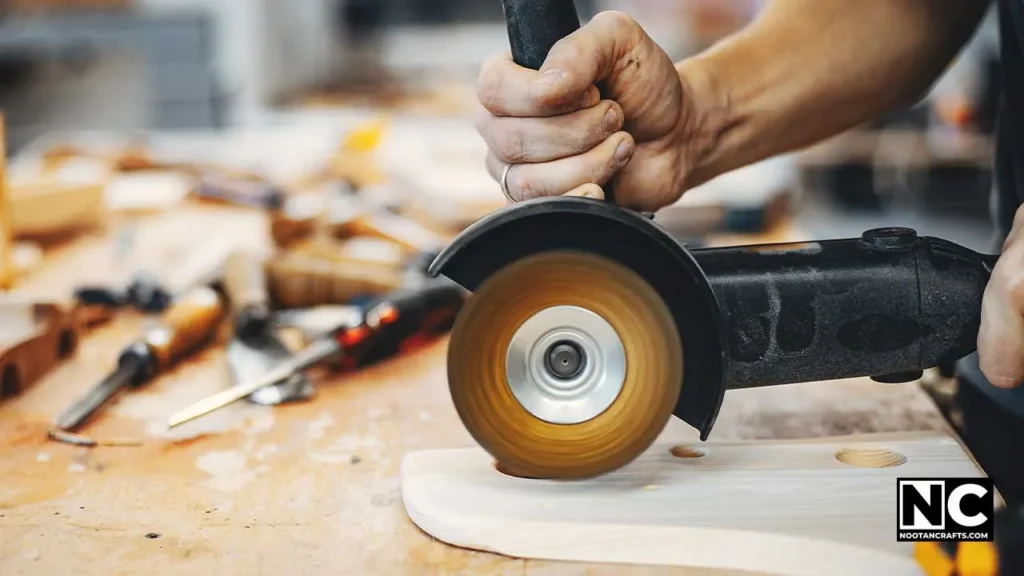
- Powerful Motor: Most angle grinders pack serious horsepower, typically ranging from 500 to 2,500 watts with 5,000 to 12,000 RPM (revolutions per minute). This capability enables them to cut through tough materials like metal, concrete, and stone.
- Interchangeable Discs: Angle grinders can be outfitted with various discs to handle versatile jobs, from abrasive cutting wheels to wire brushes and polishing pads.
- Side Handle: Angle grinders often have a side handle that provides stability and control, which is especially helpful for heavy-duty tasks. This side handle lets you keep a steady grip, even maneuvering the tool at odd angles.
Typical Applications
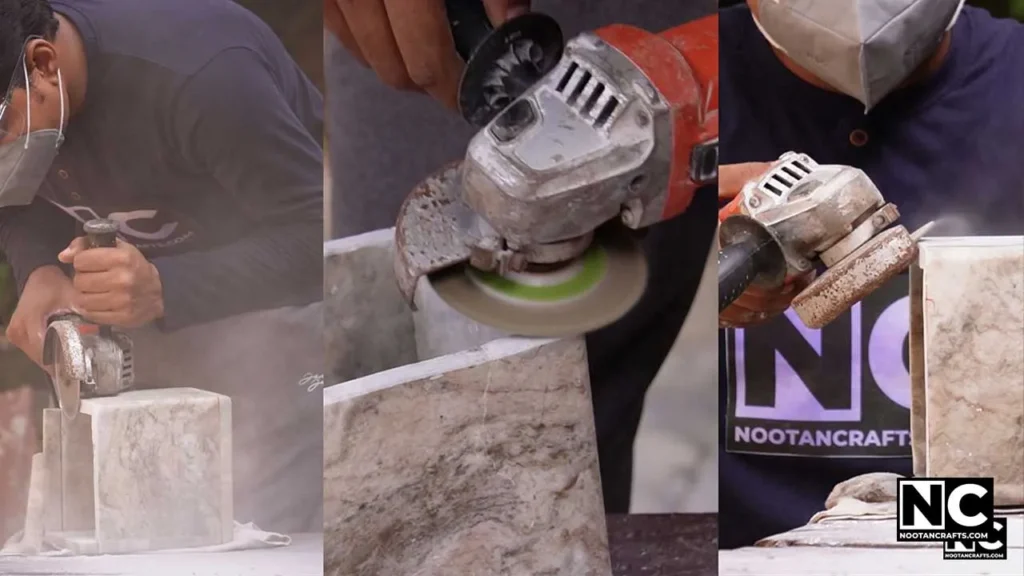
Whether you’re into metalwork, masonry, or any project requiring substantial material removal, the angle grinder could be your go-to tool. Here’s where this tool shines:
- Cutting: Whether it’s rebar, tile, or paving stones, an angle grinder can slice through it all; you just need to attach the right disk type.
- Grinding: Perfect for removing material, smoothing out rough welds, or preparing surfaces for painting.
- Polishing and Finishing: Swap in a polishing pad, and you have a tool for bringing out a clean, polished finish on metals or stones. But remember, you’ll need a variable-speed angle grinder.
Advantages of an Angle Grinder

- Versatility: With the right attachments, an angle grinder can be turned into a completely different device, allowing you to handle a wide range of tasks.
- Power: Few tools can match an angle grinder’s brute strength, which is why it’s suitable for working with thick and durable materials.
- Efficiency: When it comes to quick material removal, angle grinders will get you covered. Their higher RPM enables them to cut or grind through stubborn material within minutes.
Drawbacks to Consider
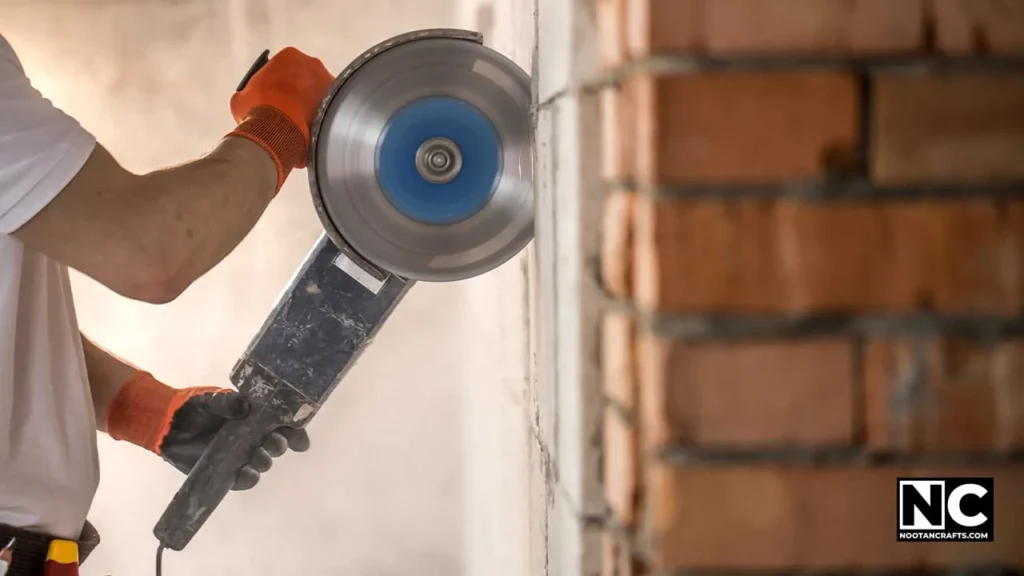
- Bulkiness: Angle grinders are powerful but also heavy and large, making them tiring to use for extended periods.
- Potential for Kickback: Due to higher power and RPM, angle grinders can produce a risky kickback if their disks get caught on a hard surface. This makes them a little trickier and potentially dangerous for beginners.
In short, the angle grinder is the kind of tool you pull out when you need to deal with harder materials. Whether you’re cutting, grinding, or working on large surfaces, an angler grinder could be your buddy who you can count on.
But if you’re after delicate details or precision, you might want to consider the die grinder instead. Let’s discuss it in detail.
What Is a Die Grinder?
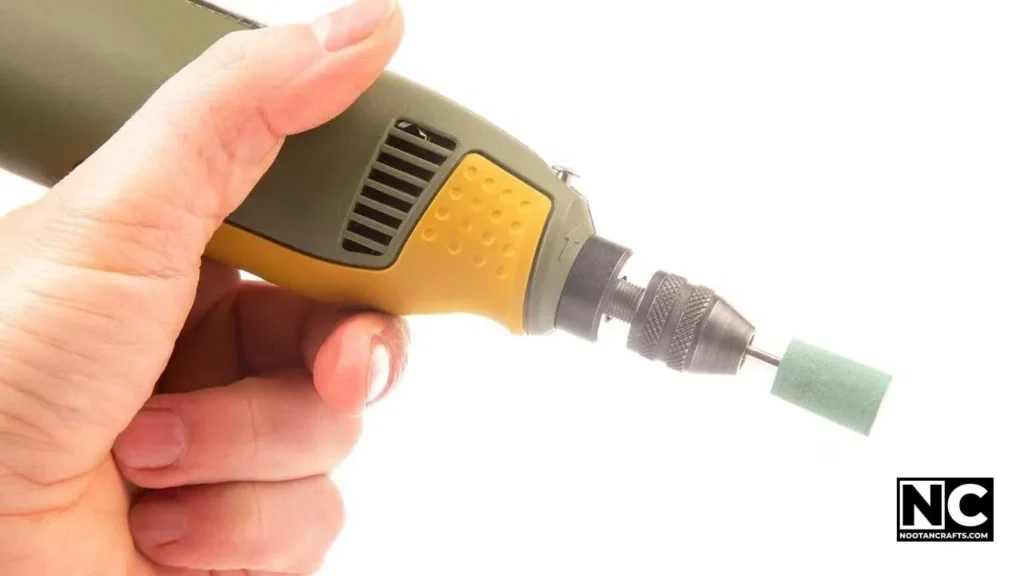
A die grinder, also called a rotary tool, rotary grinder, straight grinder, or handheld grinder, might look modest compared to an angle grinder, but don’t let its compact size fool you. This tool is all about precision and finesse. Die grinders are handheld rotary tools that spin a variety of attachments at high speeds. They’re used for intricate detail work, polishing, and reaching tight spots that bigger grinders can’t handle.
Key Features of a Die Grinder
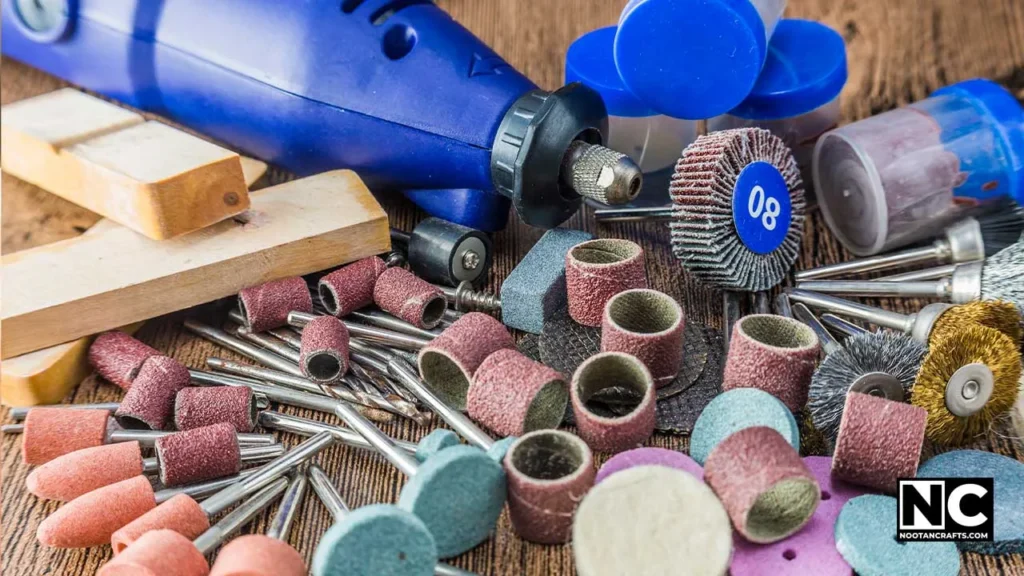
- Slim, Lightweight Design: A die grinder is designed for maneuverability. Compared to an angler grinder, It’s slim and lightweight, making it easy to hold in one hand and perfect for work that requires a steady hand.
- High RPM: Die grinders typically operate at a higher RPM (rotations per minute) than angle grinders, often reaching an astounding speed of 20,000-30,000 RPM. This high speed allows you to achieve fine-detail work with precision.
- Versatile Attachments: Instead of flat discs, die grinders use various bits, such as carbide burrs, sanding drums, and polishing wheels, to perform different tasks. This diverse setup makes them ideal for intricate, detailed work or surface finishing.
Typical Applications
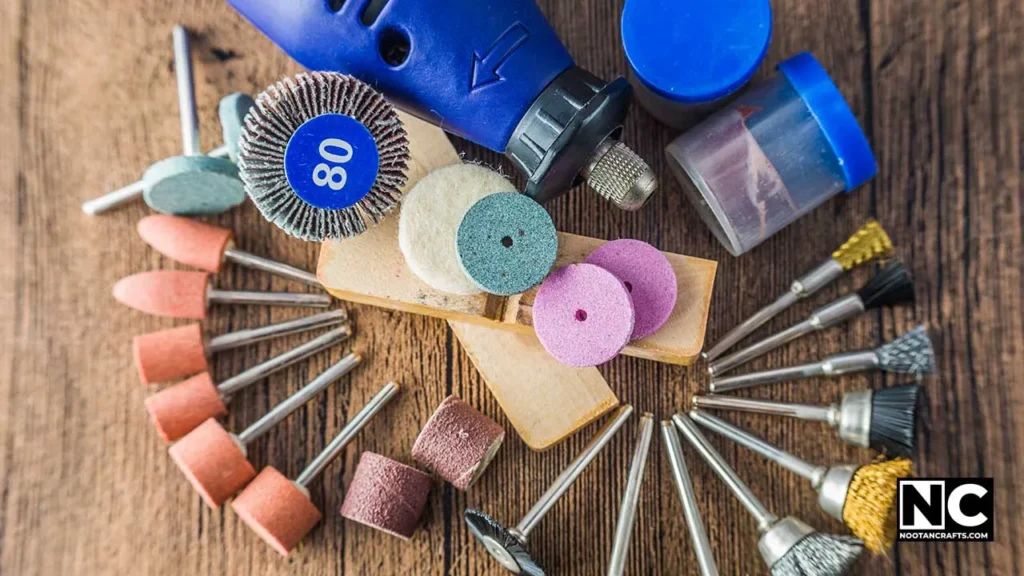
Die grinders are used for wood carving, metalworking, engraving, automotive detailing, and other small-scale tasks that require precision. Here’s a rundown of where they excel:
- Detail Grinding: Perfect for grinding out small welds or removing tiny imperfections. It can reach in tight areas where an angle grinder can’t reach.
- Engraving and Carving: With the right bit, a die grinder can engrave intricate designs on wood, metal, or plastic. It is the go-to tool for carving and engraving artists.
- Polishing and Deburring: Die grinders are excellent for giving metal surfaces a smooth finish or removing burrs from cut edges.
Advantages of a Die Grinder

- Precision: A die grinder is often a professional’s preferred choice for detailing work. Its high RPM and range of attachments allow careful control, making it ideal for small, delicate jobs.
- Compact Size: Die grinders are small and handy, unlike bulky angle grinders. They’re a favorite for getting into nooks and crannies.
- Wide Range of Uses: Die grinders can be fitted with all sorts of bits, which makes them highly versatile, from polishing jewelry to cleaning up welds on a car chassis.
Drawbacks to Consider

- Limited Power: Die grinders lack the brute strength of an angle grinder, so they aren’t suitable for heavy-duty cutting or grinding. They’re best reserved for light to moderate tasks.
- Attachment Compatibility: Die grinders use smaller attachments, which means they are incapable of handling tough work. If you need to remove lots of material or chop a meaty rod, you need an angle grinder’s assistance.
In a nutshell, if you want to add a clean, professional touch to a project involving intricate details — a die grinder is a smart pick. It won’t chew through thick metal or concrete, but it’s an unreplaceable tool when you need control and precision.
Here’s a quick comparison table for Angle Grinder vs Die Grinder, highlighting essential features and typical uses:
Angle Grinder vs Die Grinder – Comparison
Here’s a quick comparison table for Angle Grinder vs Die Grinder, highlighting essential features and typical uses:
| Feature / Use | Angle Grinder | Die Grinder |
|---|---|---|
| Design | Larger, with side-mounted disc; resembles a small saw | Compact, pen-like design |
| RPM Range | 5,000 – 12,000 RPM | 20,000 – 35,000+ RPM |
| Power Source | Corded, battery-powered, or pneumatic | Mostly pneumatic or electric |
| Disc Size | Typically 4 – 9 inches | 1/4 inch collet; uses bits and burrs |
| Material Removal | High, quickly removes large chunks of material | Low, suitable for precise, controlled removal |
| Best For | Heavy-duty cutting, grinding, polishing | Detail work, carving, polishing, engraving |
| Material Compatibility | Metal, stone, concrete, wood | Metal, wood, plastic, softer materials |
| Ease of Control | Moderate; requires both hands for stability | High; lightweight, suitable for single-hand use |
| Typical Applications | Cutting rebar, grinding welds, removing rust | Fine detailing, smoothing edges, engraving metal |
| Versatility | Great for large-scale tasks | Great for intricate, detailed work |
| Cost | Moderate to high, depending on power | Generally affordable, especially pneumatic models |
FAQs
1. What type of projects are angle grinders best for?
Angle grinders are best for heavy-duty tasks like cutting metal, grinding welds, and removing rust from large surfaces.
2. Can a die grinder cut metal effectively?
Yes, but die grinders work best on thin metal and for detailed cuts; they’re not ideal for thick materials.
3. Which grinder is safer for beginners?
Die grinders are safer for beginners due to their lighter weight and easier control.
4. How do I choose the right attachments for my angle grinder?
Choose attachments based on the task: cutting discs for metal, grinding discs for surface work, and flap discs for sanding.
5. Are there specific materials where one grinder outperforms the other?
Yes, angle grinders excel at grinding dense materials like metal and concrete, while die grinders are better at precision grinding softer materials.
Conclusion – Straight Grinder vs Angle Grinder
Angle grinder vs. die grinder: Understanding each tool’s strengths and limitations can make all the difference in choosing the right one for your project. Angle grinders are heavy-duty workhorses best for fast, large-scale material removal, while die grinders are masters of detail, designed for precision work in tighter spots.
Before purchasing, consider what types of projects you’ll often deal with. Whether it’s metalwork, woodworking, or automotive tasks, having the right grinder can save you time and effort, but don’t forget safety.
Have you tried both tools? Share your experiences or suggestions in the comments! I’d love to hear how you use your grinders and if you have any tips for fellow DIYers! Thanks for reading!









